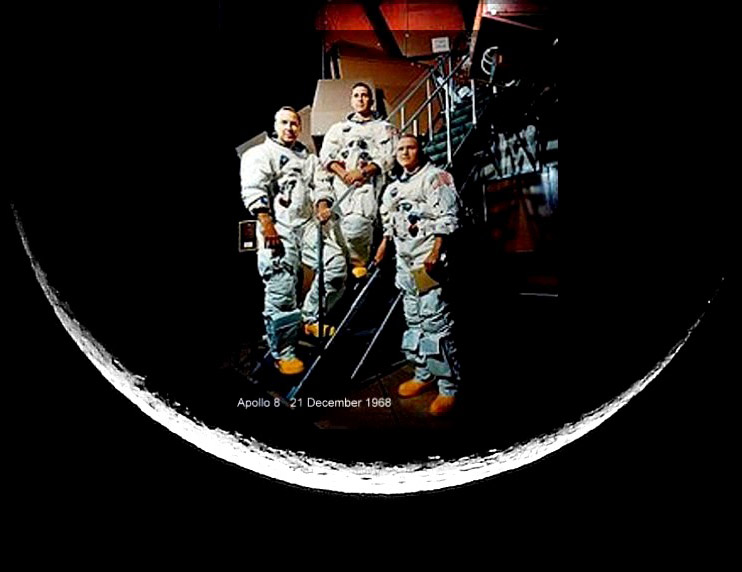April 28, 2018
Humans First Leave Earth
Originally published December 21, 2008

composite image by Alexandros Diamantis, Greece
At 7:51 AM, 40 years ago this morning, one of the biggest gambles in the history of exploration began. A mighty, and not fully tested, Saturn V rocket roared off launch pad 39-A at Cape Caniveral for the Moon. No human had ever travelled beyond Earth orbit before, and the giant rocket had never before launched humans into space. Astronauts Borman, Lovell and Anders luckily had a nearly nominal mission, NASAese for everything worked as planned. They did have to make an unexpected thruster burn to increase their distance from the Saturn upper stage, and Borman suffered the indignity of space motion sickness. The crew was the first to escape Earth's gravity, to see the home planet as a disk, to observe the lunar surface from orbit, and to see the lunar farside. They carried Lunar Orbiter images to identify surface features. Borman was always concerned with the safety of the mission but the crew took 588 photos of the lunar surface, before he forced them - with three orbits to go - to stop looking out the windows and prepare to return to Earth. In general, the crew was not impressed, summarizing the Moon as an unappetizing looking place. The images they brought back were some of the most dramatic taken by any Apollo crew or robotic spacecraft, perhaps the crew were too tired, secretly concerned about their return, or just not especially interested in lunar geology. The complete success of Apollo 8 - pushed ahead because of fear of the Soviet space program getting a man to the Moon before Apollo - marked America as the clear winner of the space race, and the Soviets never again were a serious threat to Apollo.
Chuck Wood
Related Links
Apollo 8 from Encyclopedia Astronautica
Yesterday's LPOD: Close-Up of a Rille
Tomorrow's LPOD: Levels
COMMENTS?
Register, Log in, and join in the comments.



